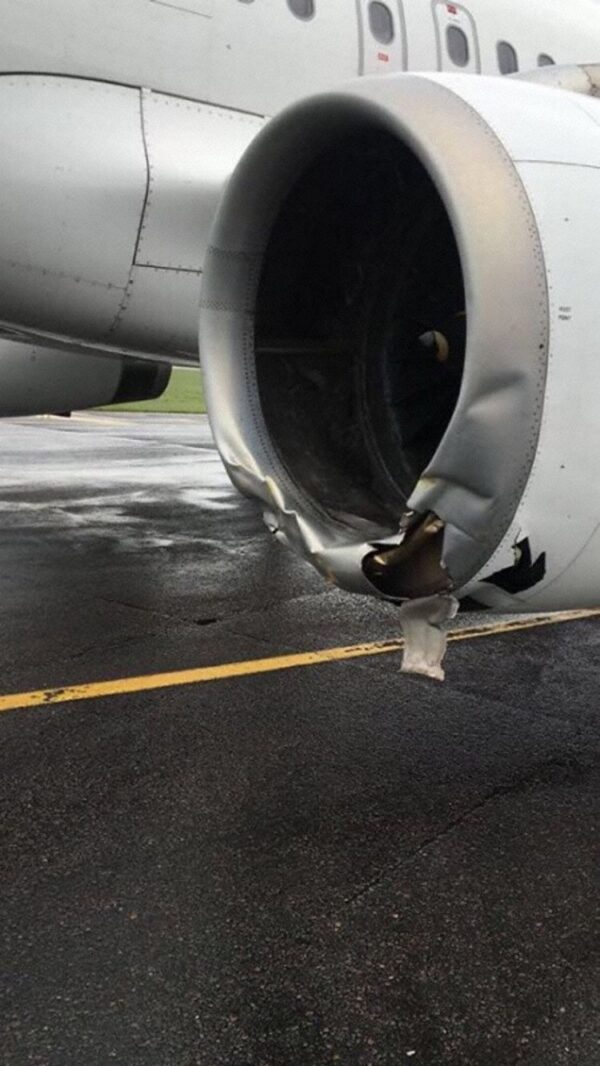Does a seemingly routine flight ever truly guarantee a safe journey? The Air Astana 2004 incident serves as a stark reminder that vigilance and preparedness are paramount in aviation, transforming a seemingly ordinary flight into an extraordinary lesson in crisis management. The video footage of this event offers a vital, unflinching look into the complexities of handling airborne emergencies, demanding scrutiny from both seasoned professionals and aspiring aviators.
Beyond the dramatic visuals, the Air Astana 2004 incident video has ignited crucial conversations within the aviation community. Its value lies not just in showcasing the incident itself, but in the tangible lessons it imparts on emergency response, the critical role of the human element, and the continuous refinement of safety protocols. In an age dominated by technological advancements in flight, this incident underscores that human adaptability and well-honed skills remain indispensable when facing the unpredictable challenges of air travel. The video serves as a testament to the importance of rigorous training, clear communication, and unwavering composure under pressure. Its a raw, unfiltered look at how pilots and crew members are trained to respond when technology falters and lives hang in the balance.
| Attribute | Details |
|---|---|
| Subject | Air Astana Flight 100 Incident - December 22, 2004 |
| Aircraft Type | Boeing 737-500 |
| Origin Airport | Almaty International Airport (ALA), Kazakhstan |
| Destination | Atyrau, Kazakhstan |
| Passengers | 14 |
| Crew | 5 |
| Nature of Incident | Catastrophic malfunction shortly after takeoff, leading to emergency landing. |
| Key Factors | Crew Resource Management, Communication, Emergency Training, Aircraft Maintenance |
| Lessons Learned | Reinforced need for rigorous training, improved maintenance protocols, and effective crew communication |
| References | Aviation Safety Network |
December 22, 2004, remains a day etched in the annals of aviation history. It was on this day that Air Astana Flight 100, a Boeing 737-500, encountered a harrowing ordeal shortly after its departure from Almaty International Airport in Kazakhstan. The flight, en route to the city of Atyrau, carried 14 passengers and a crew of 5. Mere minutes into its journey, the aircraft was beset by a catastrophic malfunction, forcing the crew to confront a situation demanding immediate and decisive action, culminating in an emergency landing that tested the limits of both man and machine.
- Subhashree Sahu Bathroom Mms A Controversial Topic Unveiled
- Yumi Etoo The Rising Star Redefining Creativity
The actions of the Flight 100 crew in the face of such adversity are a testament to their training and unwavering commitment to safety. Upon realizing the severity of the situation the imminent loss of control the pilots sprang into action, adhering meticulously to emergency protocols. Simultaneously, they maintained open communication with air traffic control, relaying critical information about the aircraft's condition and their intentions. Their seamless coordination, born from countless hours of training, proved crucial in stabilizing the aircraft and preparing for the perilous emergency landing that lay ahead. The cockpit became a crucible of calm amidst chaos, a demonstration of human resilience under extreme duress.
The Air Astana 2004 incident video has since become a cornerstone in aviation training programs worldwide. Its impact lies in highlighting several critical elements paramount to flight safety. Foremost is the concept of Crew Resource Management (CRM), emphasizing the synergistic power of teamwork and clear communication within the cockpit. The incident underscores the vital link between the flight crew and air traffic control, demonstrating how effective dialogue can provide crucial support during emergencies. The video also reaffirms the indispensable role of rigorous and realistic training scenarios, preparing pilots and crew members to respond instinctively and effectively to unexpected crises. Furthermore, it serves as a stark reminder of the need for continuous evaluation and improvement of aircraft maintenance protocols, ensuring that potential mechanical issues are identified and addressed proactively.
To fully comprehend the significance of the Air Astana 2004 incident, it's essential to acknowledge the individuals who played pivotal roles in managing the crisis. The captain of the flight, a seasoned aviator with over a decade of experience, assumed command with unwavering resolve. Alongside him, the first officer, with five years of experience, provided crucial support, executing emergency procedures with precision and calm. Their collective ability to remain composed amidst the unfolding crisis is a direct reflection of their intensive training and their dedication to adhering to the highest standards of aviation professionalism. These weren't just pilots; they were guardians of the lives entrusted to their care.
- Hd Hub 4 U Movies Download Your Ultimate Guide To Streaming And Downloading Movies
- Hd Hub 4u Your Ultimate Destination For Downloading Highquality Movies
The repercussions of the Air Astana 2004 incident extended far beyond the immediate aftermath of the emergency landing. Air Astana, as an airline, faced a period of intense scrutiny and introspection. In response, the company initiated a comprehensive overhaul of its safety practices and protocols. This included not only enhanced and more frequent training programs for all flight crews, but also a thorough revision of aircraft maintenance schedules. The aim was clear: to elevate the airline's safety standards to the highest possible level, ensuring the well-being of both passengers and crew. This commitment to safety wasn't merely a response to a crisis; it represented a fundamental shift in the airline's culture, embedding safety as its foremost priority.
Since the Air Astana 2004 incident, the global aviation industry has undergone a period of significant transformation, driven by a relentless pursuit of enhanced safety. The incident served as a catalyst for advancements in aircraft design, incorporating redundant systems and improved safety features. Emergency training for crew members has become increasingly sophisticated, utilizing realistic simulations to prepare them for a wider range of potential crises. Furthermore, regulatory bodies have implemented stricter guidelines and oversight procedures, fostering a culture of accountability and proactive risk management. These collective efforts, inspired by the lessons learned from incidents like Air Astana 2004, have contributed to a steady decline in aviation accidents, making air travel safer than ever before.
The Air Astana 2004 incident video is readily accessible on various online platforms, including specialized aviation forums, YouTube channels dedicated to aviation incidents, and news archives. These resources often provide valuable context, offering detailed analyses of the incident, expert commentary, and insights into the lessons learned. However, it is crucial to approach the viewing of this video with sensitivity and respect, acknowledging the gravity of the situation and the potential impact it may have on viewers. The video should be seen not as a source of entertainment, but as a valuable educational tool for understanding the complexities of aviation safety.
The analysis of aviation incidents, such as the Air Astana 2004 event, is of paramount importance for several compelling reasons. Firstly, it allows for the identification of potential vulnerabilities within existing aviation protocols, exposing weaknesses that may otherwise go unnoticed. Secondly, it provides crucial insights for enhancing training programs for pilots and crew members, ensuring that they are equipped with the skills and knowledge necessary to handle a wide range of emergency scenarios. Thirdly, it helps to cultivate a proactive safety culture within the aviation industry, encouraging a constant striving for improvement and a willingness to learn from past mistakes. Finally, it serves to inform the public about the ongoing efforts to enhance air travel safety, fostering confidence in the industry's commitment to passenger well-being.
For aspiring pilots, the Air Astana 2004 incident video offers a treasure trove of invaluable lessons. It underscores the critical importance of maintaining composure and clear thinking during emergency situations, emphasizing the need to remain calm under pressure. It highlights the necessity of effective and concise communication with both co-pilots and air traffic control, ensuring that critical information is relayed accurately and efficiently. Moreover, it reinforces the importance of ongoing training and simulation exercises, enabling pilots to develop the skills and reflexes necessary to respond instinctively to unexpected events. By studying and analyzing past incidents, future aviators can glean invaluable insights into the complexities of flight and contribute to a safer future for air travel.
The Air Astana 2004 incident video, therefore, transcends its role as a mere recording. It is a powerful testament to the resilience, dedication, and unwavering professionalism of those who work tirelessly to ensure the safety of air travel. By continuously analyzing, sharing, and learning from such experiences, the aviation community can collectively strive towards even higher standards of safety, fostering an environment where lessons learned are translated into tangible improvements in flight practices and protocols. The ongoing journey of understanding and learning from the Air Astana 2004 incident is a vital step in the pursuit of safer skies for all, a journey that demands our continued attention and commitment.


